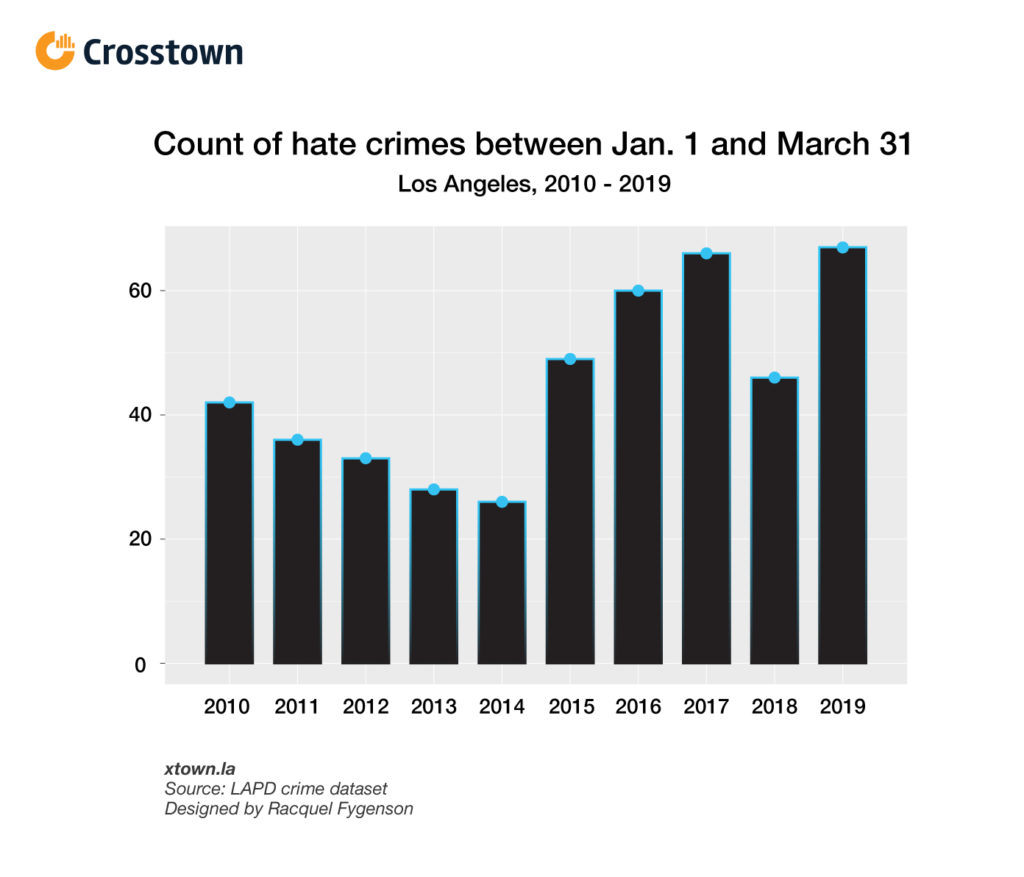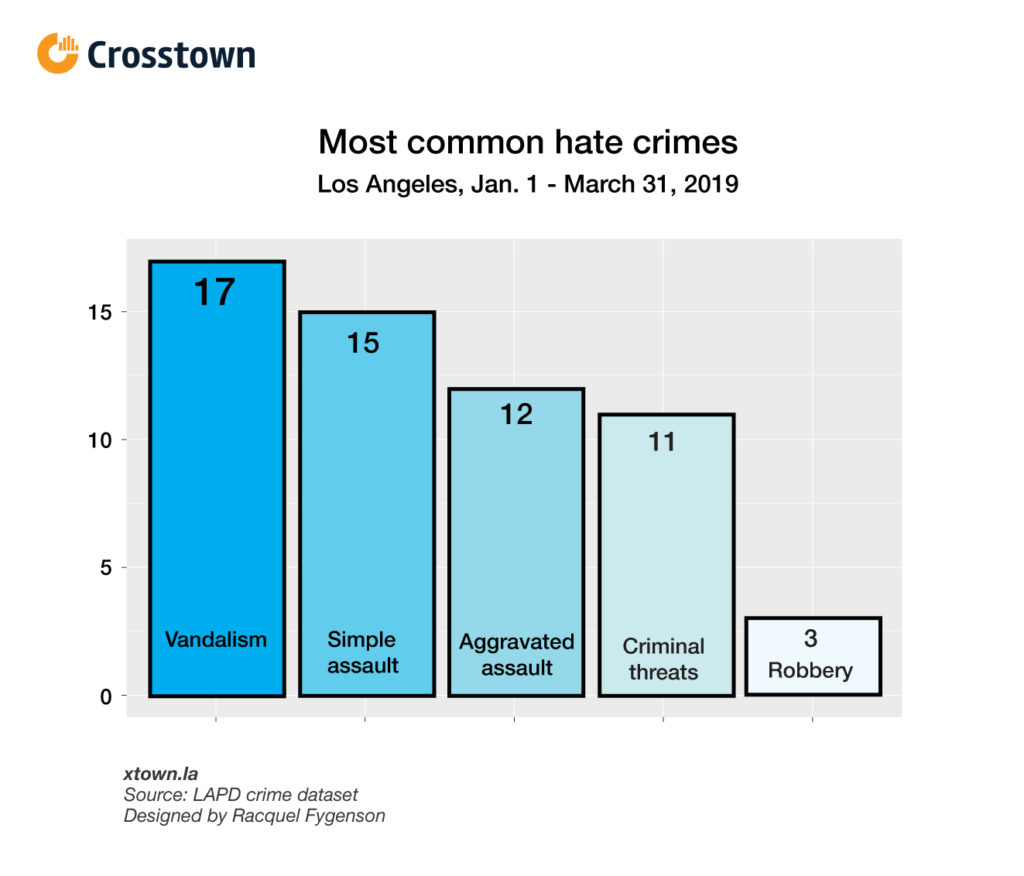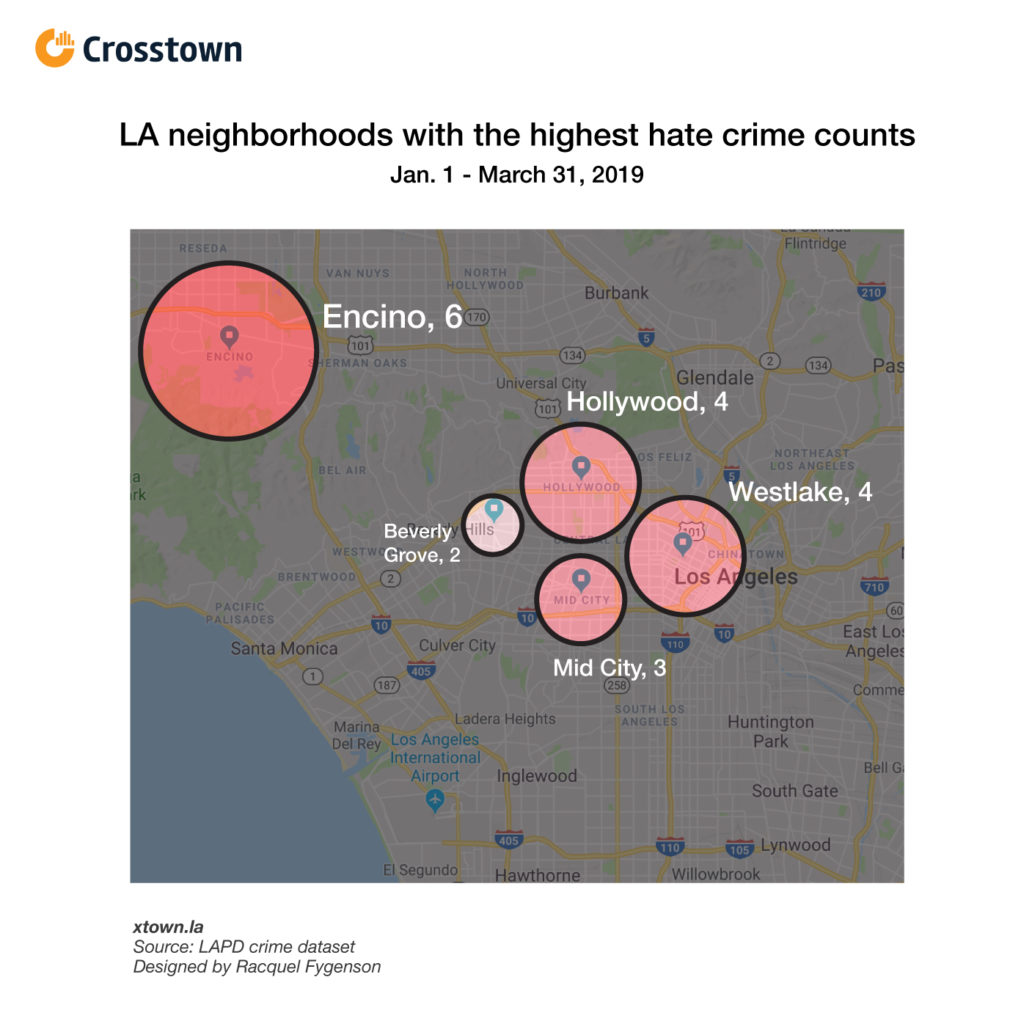Reporting on hate: 67 hate crimes in LA
A suspect threatened to kill an 18-year-old male victim while using hate-related language at 6 p.m. on Jan. 30. Both were passengers on the Expo Line.
Another suspect vandalized the Church of Scientology of Los Angeles at 12 p.m. on March 10, causing more than $400 worth of damage.
These are two of the 67 hate crimes that occurred in the City of Los Angeles between Jan.1 and March 31, 2019.
Hate crime in Los Angeles has been on the rise since 2014. Last year’s total of 286 was the highest number since 2010, when LAPD data first became publicly available.
In the January to March period, the number of hate crimes have increased in four of the past five years.

In 2018, almost half of the hate crimes reported between Jan. 1 to March 31 were violent crimes, such as assaults.
During the first quarter of 2019, 33 of the reported hate crimes were also violent, including 15 aggravated assaults and 12 simple assaults. Aggravated assaults are when the suspect uses or threatens to use a weapon, or when the victim suffers serious injury, such as broken bones, severe laceration or loss of consciousness. Simple assault is a physical attack without a weapon or serious injury.
The most common hate crime for the first quarter of this year was vandalism, with 17 reports.
Vandalism has often been the most common type of hate crime in past years as well.

Among Los Angeles neighborhoods, Encino had the highest number of hate crimes in the first quarter of 2019. This is because a hate crime on March 31 at a local restaurant resulted in four victims and four separate reports.
March 31 was also a record day for hate crime in Los Angeles with eight reported cases, making it the biggest since Jan. 1, 2010.

How we did it: We examined publicly available LAPD data on reports crimes labeled with the code for “hate crime.” For neighborhood boundaries, we rely on the borders defined by the Los Angeles Times. Learn more about our data here.
LAPD data only reflects crimes that are reported to the department, not how many crimes actually occurred. In making our calculations, we rely on the data the LAPD makes publicly available. The LAPD does periodically update past crime reports with new information, which sometimes leads them to recategorize past reports. Those revised reports do not always automatically become part of the public database. We try to update our reporting when new data become available.
Want to know how your neighborhood fares? Or simply just interested in our data? Email us at askus@xtown.la.






